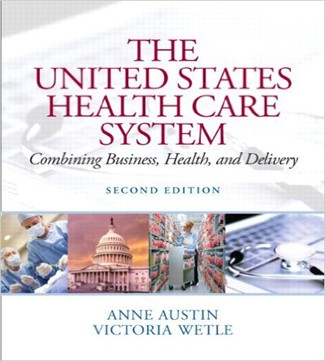-
×
 Test Bank for South Western Federal Taxation 2012 Taxation of Business Entities, 15th Edition: Smith
2 × $55.00
Test Bank for South Western Federal Taxation 2012 Taxation of Business Entities, 15th Edition: Smith
2 × $55.00 -
×
 Cost Management A Strategic Emphasis Blocher 5th Edition Test Bank
1 × $55.00
Cost Management A Strategic Emphasis Blocher 5th Edition Test Bank
1 × $55.00 -
×
 Test Bank for Introduction to Management Accounting, 16th Edition: Charles T. Horngren
1 × $35.00
Test Bank for Introduction to Management Accounting, 16th Edition: Charles T. Horngren
1 × $35.00 -
×
 Solution Manual for Absolute C++, 5/E 5th Edition Walter Savitch
1 × $35.00
Solution Manual for Absolute C++, 5/E 5th Edition Walter Savitch
1 × $35.00 -
×
 Solutions Manual to accompany Surveying with Construction Applications 7th edition 9780135000519
1 × $55.00
Solutions Manual to accompany Surveying with Construction Applications 7th edition 9780135000519
1 × $55.00 -
×
 Solution Manual for E-commerce 2013, 9/E 9th Edition : 0132730359
1 × $55.00
Solution Manual for E-commerce 2013, 9/E 9th Edition : 0132730359
1 × $55.00 -
×
 Financial Accounting: IFRS Edition Weygandt Kimmel Kieso 1st Edition Solutions Manual
1 × $55.00
Financial Accounting: IFRS Edition Weygandt Kimmel Kieso 1st Edition Solutions Manual
1 × $55.00 -
×
 Test Bank for Business Communication 16th Edition by Lehman
1 × $35.00
Test Bank for Business Communication 16th Edition by Lehman
1 × $35.00 -
×
 Test Bank for Strategic Management: A Competitive Advantage Approach, Concepts, 15/E 15th Edition Fred R. David, Forest R. David
2 × $35.00
Test Bank for Strategic Management: A Competitive Advantage Approach, Concepts, 15/E 15th Edition Fred R. David, Forest R. David
2 × $35.00 -
×
 Test Bank for Principles of Anatomy and Physiology 14th Edition Gerard J Tortora Download
2 × $35.00
Test Bank for Principles of Anatomy and Physiology 14th Edition Gerard J Tortora Download
2 × $35.00 -
×
 Test Bank for Operating Systems: Internals and Design Principles, 7th Edition: William Stallings
2 × $35.00
Test Bank for Operating Systems: Internals and Design Principles, 7th Edition: William Stallings
2 × $35.00 -
×
 Test Bank for Core Concepts in Sociology, 2nd Canadian Edition: Lindsey
1 × $55.00
Test Bank for Core Concepts in Sociology, 2nd Canadian Edition: Lindsey
1 × $55.00 -
×
 Test Bank for Advanced Financial Accounting, 6/E 6th Edition : 013703038X : Canada
1 × $35.00
Test Bank for Advanced Financial Accounting, 6/E 6th Edition : 013703038X : Canada
1 × $35.00 -
×
 Test Bank for Medical Surgical Nursing Concepts and Practice, 1st Edition: deWit
1 × $35.00
Test Bank for Medical Surgical Nursing Concepts and Practice, 1st Edition: deWit
1 × $35.00 -
×
 Test Bank for Macroeconomics Theories and Policies, 10th Edition : Froyen
2 × $35.00
Test Bank for Macroeconomics Theories and Policies, 10th Edition : Froyen
2 × $35.00 -
×
 Test Bank for Clinical Nursing Skills, 8th Edition: Smith
1 × $35.00
Test Bank for Clinical Nursing Skills, 8th Edition: Smith
1 × $35.00 -
×
 Test Bank for Decision Support and Business Intelligence Systems, 9th Edition: Efraim Turban
2 × $35.00
Test Bank for Decision Support and Business Intelligence Systems, 9th Edition: Efraim Turban
2 × $35.00 -
×
 Understanding Business Nickels 10th Edition Test Bank
1 × $35.00
Understanding Business Nickels 10th Edition Test Bank
1 × $35.00 -
×
 Test Bank for Contemporary Advertising and Integrated Marketing Communications, 13th Edition: Arens
1 × $55.00
Test Bank for Contemporary Advertising and Integrated Marketing Communications, 13th Edition: Arens
1 × $55.00 -
×
 Medical Language for Modern Health Care 2nd Edition Allan Lockyer Test Bank
2 × $55.00
Medical Language for Modern Health Care 2nd Edition Allan Lockyer Test Bank
2 × $55.00 -
×
 Test Bank for Sociology in Todays World, 2nd Edition : Furze
1 × $55.00
Test Bank for Sociology in Todays World, 2nd Edition : Furze
1 × $55.00 -
×
 Business Law Text and Cases Clarkson 13th Edition Test Bank
1 × $35.00
Business Law Text and Cases Clarkson 13th Edition Test Bank
1 × $35.00 -
×
 Test bank for Nutrition & You Core Concepts for Good Health 0321897226
1 × $55.00
Test bank for Nutrition & You Core Concepts for Good Health 0321897226
1 × $55.00 -
×
 Solutions Manual to accompany Introduction To Digital Communications 9780201184938
1 × $55.00
Solutions Manual to accompany Introduction To Digital Communications 9780201184938
1 × $55.00 -
×
 Solutions Manual to accompany Developmental Mathematics 2nd edition 9780321652744
1 × $55.00
Solutions Manual to accompany Developmental Mathematics 2nd edition 9780321652744
1 × $55.00 -
×
 Understanding Business Nickels 10th Edition Solutions Manual
2 × $35.00
Understanding Business Nickels 10th Edition Solutions Manual
2 × $35.00 -
×
 Solution Manual for Transport Phenomena in Biological Systems, 2/E 2nd Edition George A. Truskey, Fan Yuan, David F. Katz
1 × $55.00
Solution Manual for Transport Phenomena in Biological Systems, 2/E 2nd Edition George A. Truskey, Fan Yuan, David F. Katz
1 × $55.00 -
×
 Solutions Manual to accompany Basic Probability Theory 0486466280
1 × $55.00
Solutions Manual to accompany Basic Probability Theory 0486466280
1 × $55.00 -
×
 Solution Manual for Decision Support and Business Intelligence Systems, 9/E 9th Edition Efraim Turban, Ramesh Sharda, Dursun Delen
1 × $35.00
Solution Manual for Decision Support and Business Intelligence Systems, 9/E 9th Edition Efraim Turban, Ramesh Sharda, Dursun Delen
1 × $35.00
Subtotal: $1,615.00


Reviews
There are no reviews yet.